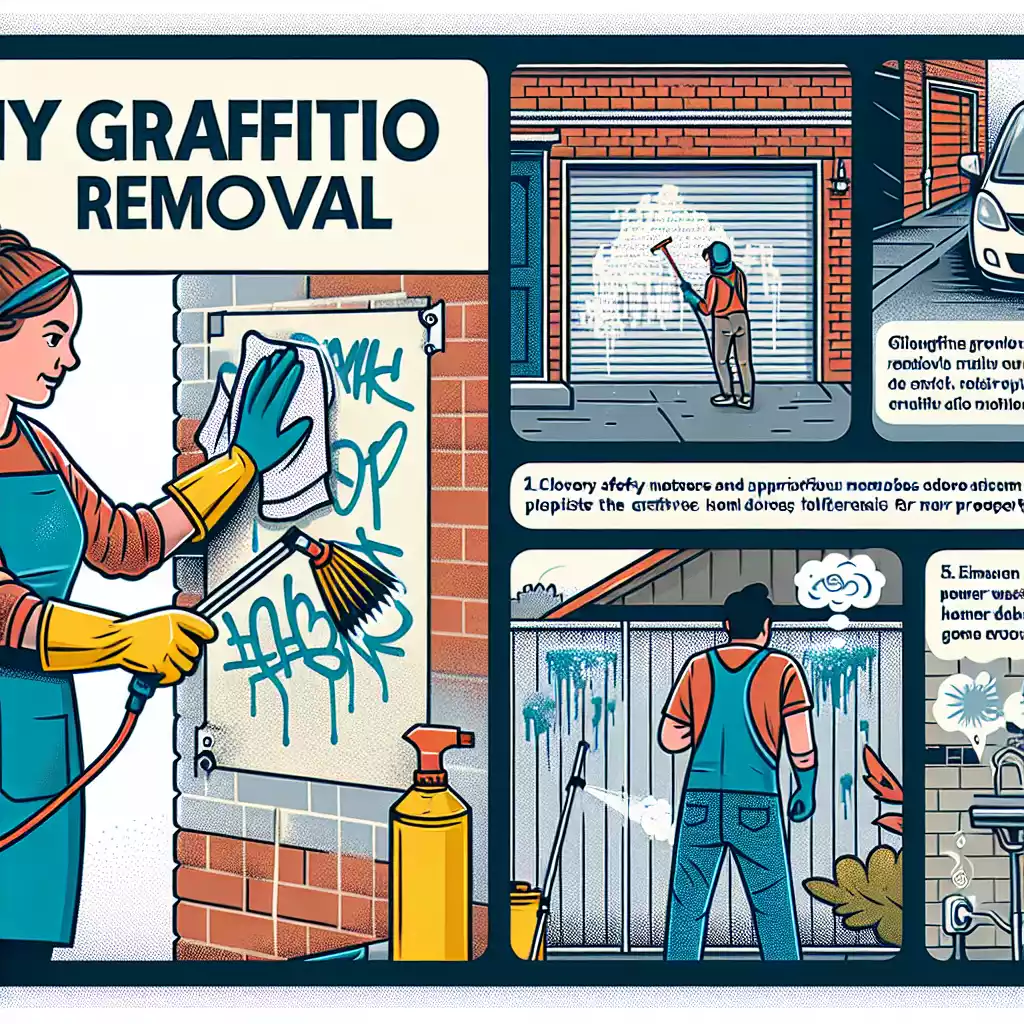Understanding Graffiti and Its Impact
What is Graffiti?
Graffiti often appears as unwanted drawings or scribbles on walls and other surfaces. It’s not just an eyesore but can also lead to more serious issues like vandalism. Most graffiti is done with spray paint, but markers and other tools are also common.
The Effects of Graffiti on Property Value
Graffiti can significantly reduce property value. It sends a message that the area is neglected, which can deter potential buyers or tenants. Cleaning it up promptly helps maintain your property’s appeal.
Legal Implications of Graffiti
In many places, graffiti is illegal. Property owners are often required to remove it within a certain timeframe or face fines. Understanding local laws can help you stay compliant and avoid penalties.
Preparing for Graffiti Removal
Assessing the Damage
Before you start, take a close look at the graffiti. Note the type of paint used and the surface it’s on. This will help you choose the most effective removal method.
Gathering Necessary Supplies
You’ll need specific supplies to remove graffiti effectively. Here’s a quick list:
– Cleaning Agents: Solvents, graffiti removers, or even household items like baking soda.
– Protective Gear: Gloves, masks, and eye protection.
– Tools and Equipment: Brushes, rags, and possibly a pressure washer.
Choosing the Right Removal Method

Factors to Consider
Different surfaces and paints require different approaches. Here are some key factors:
– Type of Surface: Brick, wood, metal, and glass all need different treatments.
– Type of Paint Used: Spray paint vs. marker ink.
– Age of the Graffiti: Older graffiti can be harder to remove.
Chemical Removal
Chemicals can be effective but come with pros and cons. They work quickly but can damage surfaces and require safety precautions. Always follow the manufacturer’s instructions.
Pressure Washing
Pressure washing is ideal for large areas and hard surfaces like brick and concrete. It’s fast but can damage softer materials. Use the right nozzle and pressure setting for the best results.
Abrasive Blasting
Abrasive blasting uses materials like sand or baking soda to scrub off graffiti. It’s effective but can be harsh on surfaces. Always test a small area first.
Step-by-Step Graffiti Removal Guide
Chemical Removal Process
1. Application: Apply the chemical remover to the graffiti.
2. Scrubbing and Rinsing: Use a brush to scrub the area, then rinse with water.
Pressure Washing Process
1. Equipment Setup: Connect your pressure washer to a water source and select the appropriate nozzle.
2. Cleaning Technique: Hold the nozzle at a 45-degree angle and keep it moving to avoid damaging the surface.
Abrasive Blasting Process
1. Surface Preparation: Cover nearby areas to protect them from abrasive materials.
2. Blasting Technique: Use short bursts and keep the nozzle moving to avoid over-blasting one spot.
Post-Removal Care

Inspecting the Surface
After removing the graffiti, inspect the surface for any remaining marks or damage. Additional cleaning might be necessary.
Applying Protective Coatings
To prevent future graffiti, consider applying protective coatings:
– Anti-Graffiti Coatings: These make it easier to clean off graffiti in the future.
– Sealants: Protect surfaces from weather and make graffiti less likely to stick.
Preventing Future Graffiti
Deterrent Measures
Prevention is better than cure. Here are some effective deterrents:
– Lighting and Surveillance: Well-lit areas with cameras deter vandals.
– Landscaping Techniques: Planting thorny bushes near walls can make them less accessible.
Community Involvement
Getting your community involved can also help:
– Neighborhood Watch Programs: Increase vigilance and report incidents quickly.
– Graffiti Awareness Campaigns: Educate residents about the impact of graffiti and how to prevent it.
When to Call a Professional
Recognizing Severe Cases
Sometimes, DIY methods aren’t enough. If the graffiti is extensive or on a delicate surface, it might be best to call a professional.
Understanding Professional Services
Professionals have specialized tools and experience. They can often remove graffiti more effectively and with less risk of damage.
Resources for Property Owners
Local Government Programs
Many local governments offer resources and support for graffiti removal. Check your city’s website for more information.
Online Resources and Forums
There are many online communities where property owners share tips and experiences. Websites and forums can be invaluable resources.
FAQs
1. What are the best household items for removing graffiti?
Household items like baking soda, vinegar, and even WD-40 can be effective on some surfaces.
2. Can I use a pressure washer on all surfaces?
No, pressure washers are best for hard surfaces like brick and concrete. They can damage softer materials like wood or stucco.
3. How can I tell if a chemical remover is safe for my surface?
Always test a small, inconspicuous area first to ensure the chemical won’t damage the surface.
4. Are there eco-friendly graffiti removal options?
Yes, there are biodegradable graffiti removers available that are less harmful to the environment.
5. How often should I apply anti-graffiti coatings?
Most anti-graffiti coatings last several years, but it’s a good idea to inspect and reapply as needed.
Conclusion
In conclusion, tackling graffiti removal doesn’t have to be daunting. With the right tools, techniques, and preventive measures, you can keep your property looking its best. Whether you choose to do it yourself or call in the professionals, staying informed and prepared is key. For more tips and resources, visit your local government website or join online forums where property owners share their experiences.
REMOVING GRAFFITI! How YOU Can Help Your Community!
Ruth Aquilani is a renowned graffiti artist known for her bold, colorful, and expressive style. She began her career as a street artist in the early 2000s, quickly making a name for herself in the graffiti community with her unique and striking works of art.
